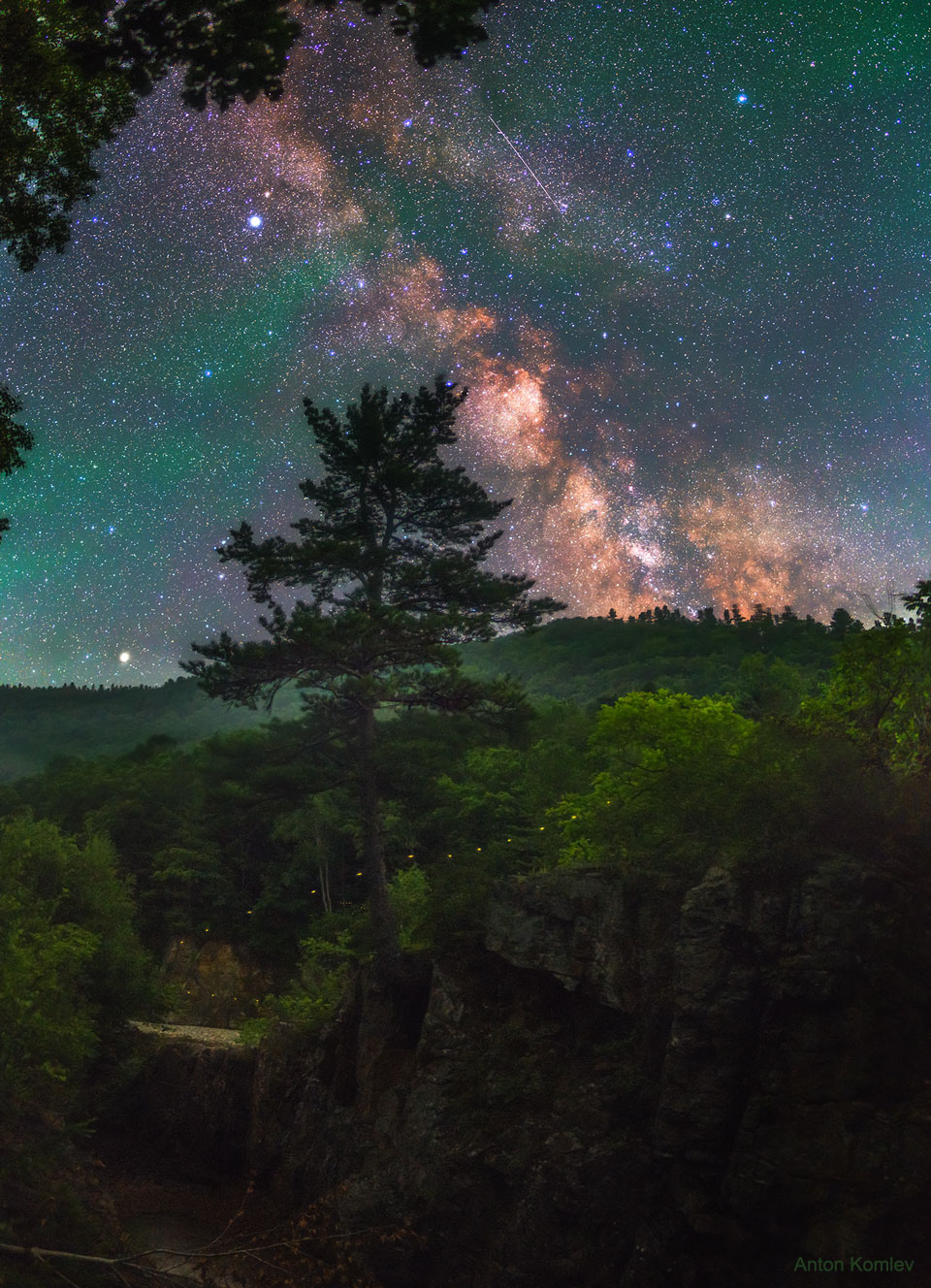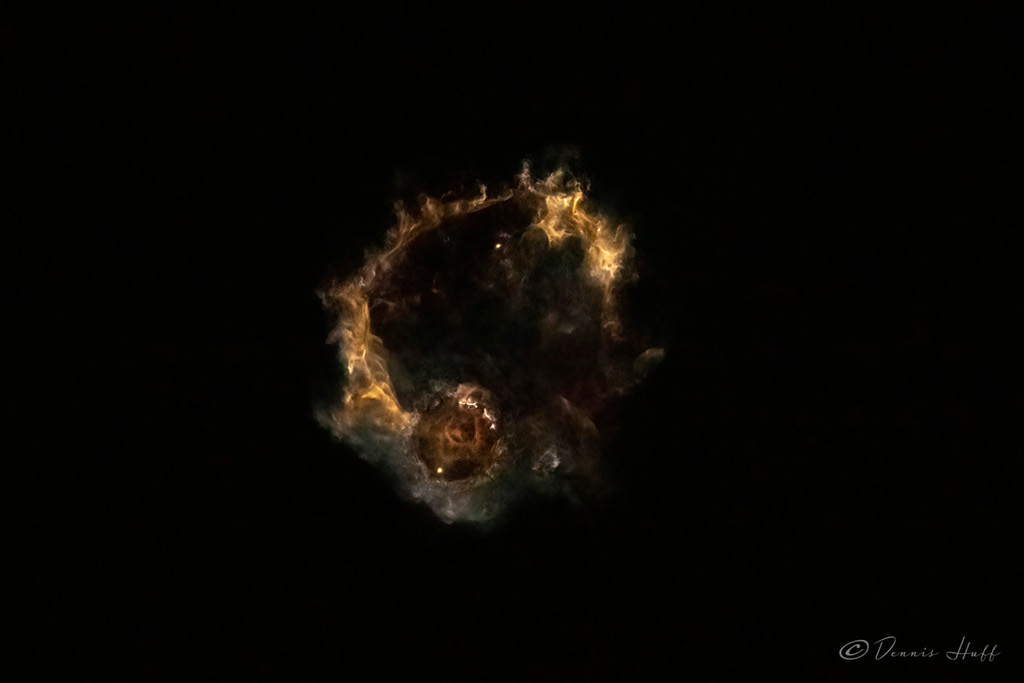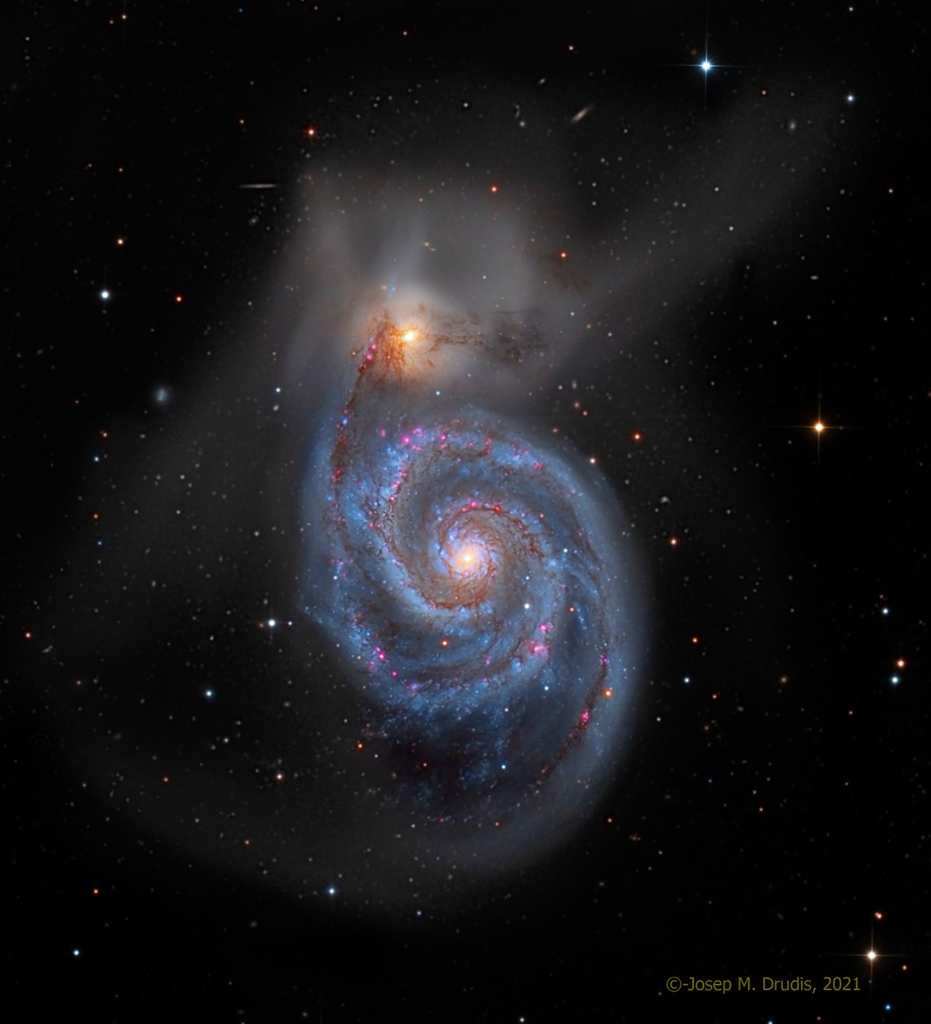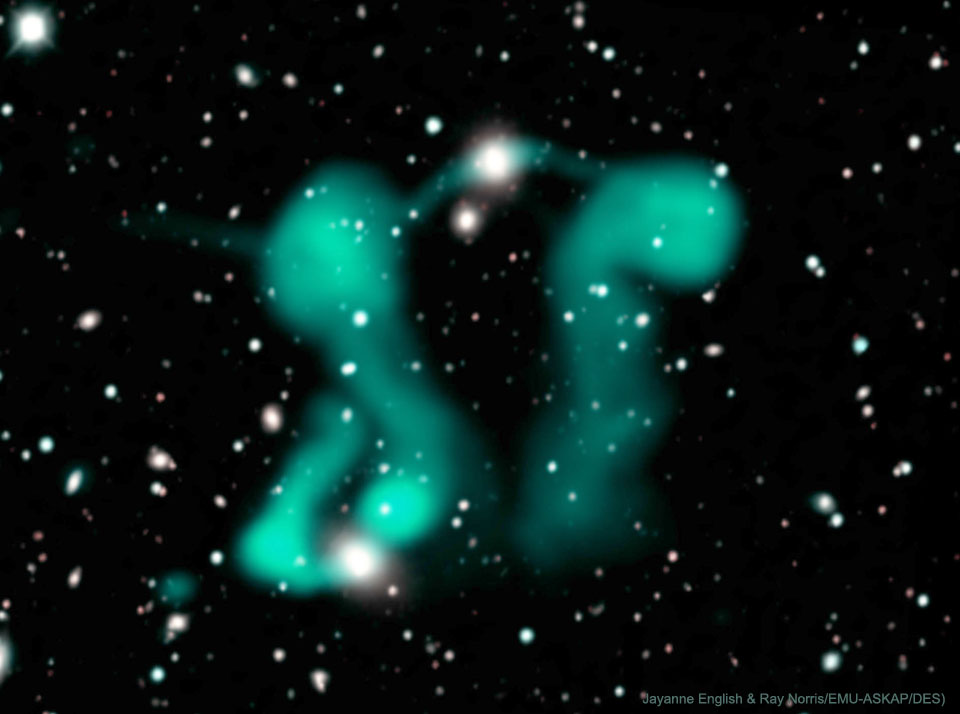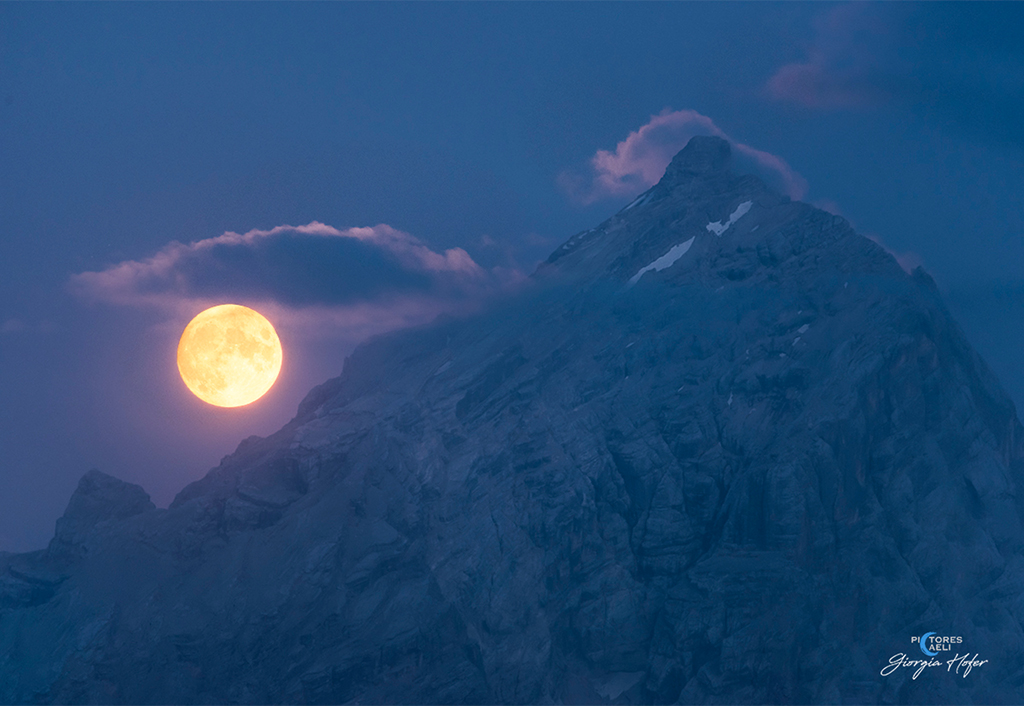Nombre total de pages vues
19/09/2021
17/09/2021
ASTRONOMY - Video: Flash on Jupiter
2021 September 17
Video Credit & Copyright: T. Humbert, S. Barré, A. Desmougin & D. Walliang (Société Lorraine d'Astronomie), Astroqueyras
Explanation: There has been a flash on Jupiter. A few days ago, several groups monitoring our Solar System's largest planet noticed a two-second long burst of light. Such flashes have been seen before, with the most famous being a series of impactor strikes in 1994. Then, fragments of Comet Shoemaker-Levy 9 struck Jupiter leaving dark patches that lasted for months. Since then, at least seven impacts have been recorded on Jupiter -- usually discovered by amateur astronomers. In the featured video, variations in the Earth's atmosphere cause Jupiter's image to shimmer when, suddenly, a bright flash appears just left of center. Io and its shadow are visible on the right. What hit Jupiter will likely never be known, but considering what we do know of the nearby Solar System, it was likely a piece of rocky and ice -- perhaps the size of a bus -- that broke off long-ago from a passing comet or asteroid.
06/09/2021
ASTRONOMY - Firefly Milky Way over Russia
2021 September 6
Image Credit & Copyright: Anton Komlev
Explanation: It started with a pine tree. The idea was to photograph a statuesque pine in front of the central band of our Milky Way Galaxy. And the plan, carried out two months ago, was successful -- they both appear prominently. But the resulting 3-frame panorama captured much more. Colorful stars, for example, dot the distant background, with bright Altair visible on the upper left. The planet Saturn, a bit closer, was captured just over the horizon on the far left. Just beyond the Earth's atmosphere, seen in the upper right, an Earth-orbiting satellite was caught leaving a streak during the 25-second exposure. The Earth's atmosphere itself was surprisingly visible -- as green airglow across the image top. Finally, just by chance, there was a firefly. Do you see it? Near the image bottom, the firefly blinked in yellow several times as it fluttered before the rolling hills above Milogradovka River in Primorsky Krai, Russia.
04/09/2021
POURQUOI - Pourquoi rêve-t-on ?
ASTRONOMY - A Falcon 9 Nebula
2021 September 4
Image Credit & Copyright: Dennis Huff
Explanation: Not the Hubble Space Telescope's latest view of a distant galactic nebula, this illuminated cloud of gas and dust dazzled early morning spacecoast skygazers on August 29. The snapshot was taken at 3:17am from Space View Park in Titusville, Florida. That's about 3 minutes after the launch of a SpaceX Falcon 9 rocket on the CRS-23 mission to resupply the International Space Station. It captures drifting plumes and exhaust from the separated first and second stage of the rocket rising through still dark skies. The lower bright dot is the second stage continuing on to low Earth orbit. The upper one is the rocket's first stage performing a boostback burn. Of course the first stage booster returned to make the first landing on the latest autonomous drone ship to arrive in the Atlantic, A Short Fall of Gravitas.
03/09/2021
02/09/2021
ASTRONOMY - M51: The Whirlpool Galaxy
2021 September 2
Image Credit & Copyright: Josep Drudis
Explanation: Find the Big Dipper and follow the handle away from the dipper's bowl until you get to the last bright star. Then, just slide your telescope a little south and west and you'll come upon this stunning pair of interacting galaxies, the 51st entry in Charles Messier's famous catalog. Perhaps the original spiral nebula, the large galaxy with well defined spiral structure is also cataloged as NGC 5194. Its spiral arms and dust lanes clearly sweep in front of its companion galaxy (top), NGC 5195. The pair are about 31 million light-years distant and officially lie within the angular boundaries of the small constellation Canes Venatici. Though M51 looks faint and fuzzy to the eye, deep images like this one reveal its striking colors and galactic tidal debris.
01/09/2021
ASTRONOMY - Dancing Ghosts: Curved Jets from Active Galaxies
Image Credit: Jayanne English & Ray Norris, EMU-ASKAP, DES; Text: Jayanne English (U. Manitoba)
Explanation: Why would galaxies emit jets that look like ghosts? And furthermore, why do they appear to be dancing? The curled and fluffy jets from the supermassive black holes at the centers of two host galaxies (top center and lower left) are unlike anything seen before. They were found by astronomers using the Australian Square Kilometer Array Pathfinder (ASKAP) radio telescope when creating maps tracing the evolution of galaxies. Images preceding this Evolutionary Map of the Universe survey only showed amorphous blobs. Eventually, comparisons of relative amounts of energy emitted revealed the glowing elongated structures were created by electrons streaming around magnetic field lines. Overlaying the radio data on an optical view of the sky (Dark Energy Survey) confirmed that the electron streams originated from the centers of active galaxies. Usually such Active Galactic Nuclei (AGN) produce straight jets. A leading hypothesis for the geometric origin of these unusually graceful shapes involves the flow of large-scale intergalactic winds.
29/08/2021
ASTRONOMY - A Blue Hour Full Moon
2021 August 26
Image Credit & Copyright: Giorgia Hofer
Explanation: Nature photographers and other fans of planet Earth always look forward to the blue hour. That's the transition in twilight, just before sunrise or after sunset, when the Sun is below the horizon but land and sky are still suffused with a beautiful blue light. After sunset on August 21, this blue hour snapshot captured the nearly full Moon as it rose opposite the Sun, above the rugged Italian Alps from Cortina d'Ampezzo, Italy. Sharing bluish hues with the sky, the rocky pyramid of Monte Antelao, also known as the King of the Dolomites, is the region's prominent alpine peak. The moonlight is yellow, but even so this full Moon was known to some as a seasonal Blue Moon. That's because by one definition the third full Moon of a season with four full moons in it is called a Blue Moon. Recognizing a season as the time between a solstice and an equinox, this season's fourth full Moon will be rising in the blue hour of September 20, just before September's equinox.
28/08/2021
MINERAUX - Le sélénite, une pierre de lune
ASTRONOMY - Orion and the Ocean of Storms
2025 December 13 Orion and the Ocean of Storms Image Credit: NASA , Artemis 1 Explanation: On December 5, 2022, a camera on board the u...
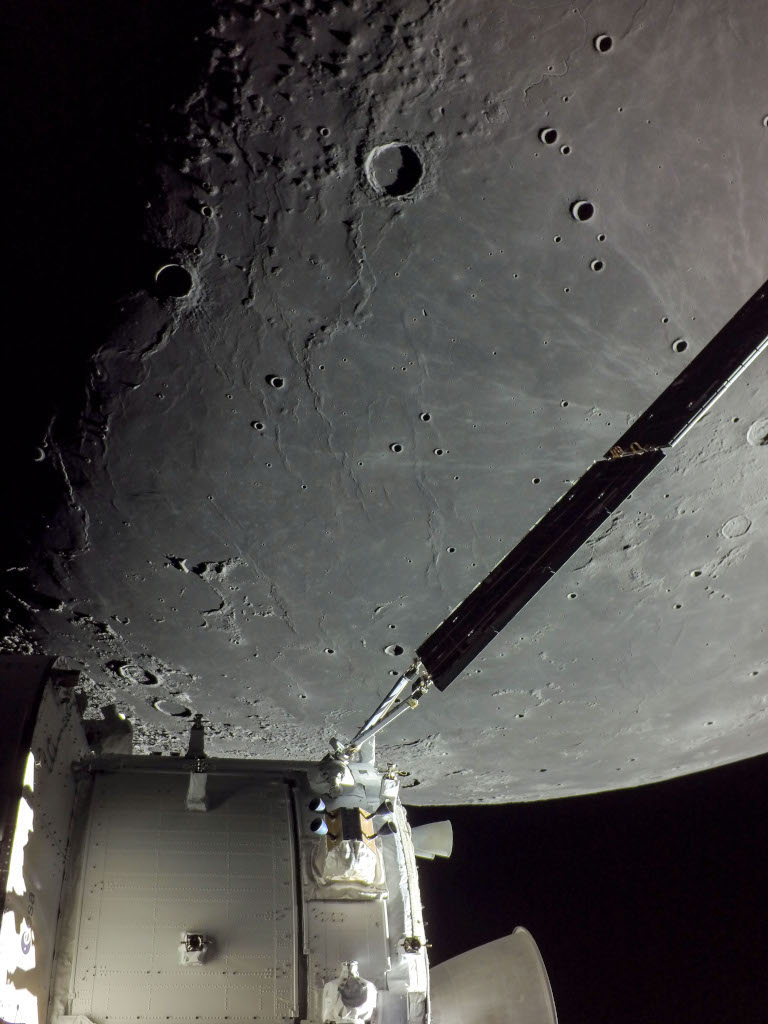
-
2022 September 26 All the Water on Planet Earth Illustration Credit: Jack Cook, Adam Nieman, Woods Hole Oceanographic Institution ; Data ...
-
2025 May 11 The Surface of Venus from Venera 14 Image Credit: Soviet Planetary Exploration Program , Venera 14 ; Processing & Copyri...
